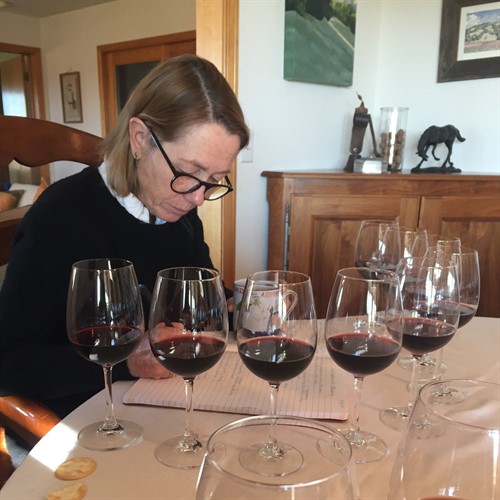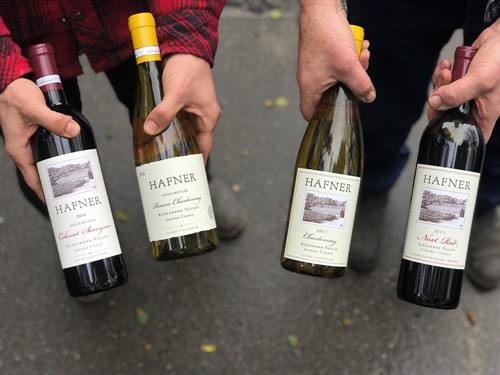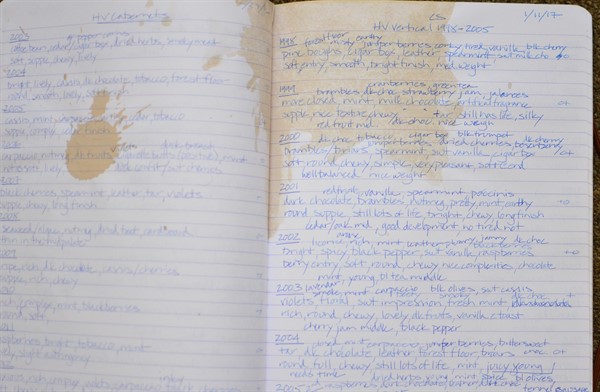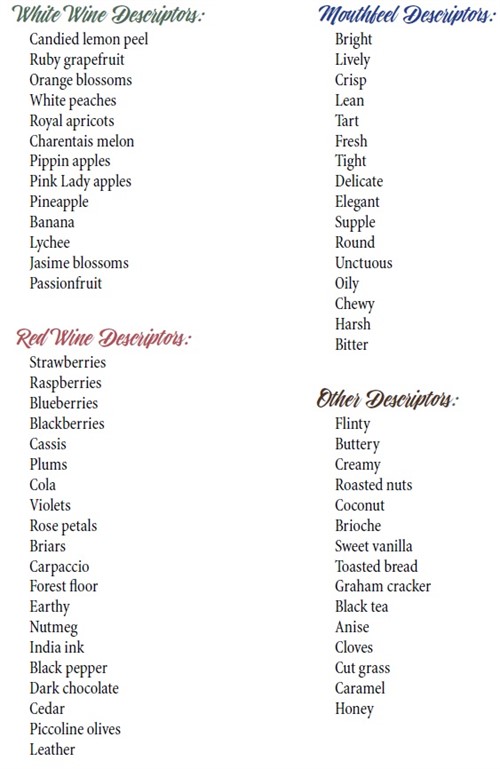How to Taste Wine
- August 1, 2019
Without a doubt, wine tasting can be intimidating, but with a few hints, tasting wine can be lot of fun. And remember, there isn’t a right or wrong answer…it’s your preference. All you need is a little knowledge to back up your opinion and you’ll wow your friends with your tasting skills.
The key to a good palate is practice: tasting, tasting, tasting. While there are many forms of tastings: blind tastings, vertical tastings, component tastings, the best tasting is the one at home opening a few bottles of wine with friends and deciding which wine you enjoy the most. We taste daily (no surprises there, I guess), but we love when friends bring a bottle or two and we taste together. There is usually a group favorite, but there is always a love/hate wine and those are the wines that generate the most conversation. A wine for one person may be too smoky, too oaky, but for another person it’s not. It’s all a matter of personal preference and that what makes wine tasting fun.
Another key to tasting is a descriptive vocabulary, one that conjures up a memory for the others in the tasting. If I describe a wine as “floral”, you might think “flowery” which is not very exact, but if I say “rose petals”, you will remember aromas of a rose. That said, my description “rose petals” might be your “violets” and, of course, both descriptors are correct; in fact they complement each other; maybe next time I’ll use “violets” in place of “rose petals”. Tasting with others expands your descriptive vocabulary.
Wine tasting has 3 components, the 3 S’s—Swirl, Sniff, Sip.
Step 1: Swirl the glass.
Swirling the glass allows the aromas to become elevated and pronounced. In fact, it oxygenates the wine allowing it to open up and become more aromatic. Smell the glass without swirling, then swirl it and you will find that you can smell more aromas after you have swirled the glass.
Step 2: Sniff/Smell the wine.
Key to wine tasting is the second component—the Sniff. Flavors are actually aromas; you smell them before you taste them. Think about when you have a cold with a stuffy nose; you can’t really taste anything you are eating or drinking. When I taste wine, I spend more time smelling the wine than I do tasting it. When you read my tasting notes, my descriptors focus on the aromatics of the wine. Is it fruity and if so what kind of fruit? Chardonnays tend to be more citrus and stone fruit based (lemon peel, pink grapefruit, orange blossoms, white peaches, royal apricots). There are times, though, that I find apple aromas in Chardonnay and they can be tart like a Pippin or sweet like a Pink Lady. Your descriptors can be as detailed and specific as you want, but they don’t have to be. For Cabernets, I find more berry fruit aromas and they have range from subtle, soft aromas of strawberries, blueberries, raspberries to riper, more intense notes of cassis, blackberries, bing cherries.
There are, of course, other aromatics besides the fruit. Wines are aged in oak barrels that allow the wine to develop and age, but they also impart aromas that can range from toasted bread and sweet vanilla to smoky barbecue. Winemaking techniques also affect the aromas: in Chardonnay, malolactic fermentation gives a buttery and creamy quality and lees stirring produces a flinty note. A common descriptor of Cabernet is chocolate; it can range from milk chocolate to bittersweet chocolate depending on the barrel time.
Step 3: Sip/Taste the wine.
The best part of tasting wine is the Sip. You are already familiar with the wine aromatically, but now as you sip the wine, you will decide if you will give it a thumbs up or not. The texture, the body, the flavors all weigh in on your decision. Perhaps you love the aromas of the wine, but it is too lean or hard on the palate and is not enjoyable to drink. Or you think the wine is simple aromatically and when you taste it, you find that it is rich, supple, complex. Or better yet, the wine you like the best during the Sniff is the wine you enjoy the most as you sip it. Tasting wine is as easy or complex as you make it. The more familiar you are with descriptors, the easier tasting will be.



